Types and features of the choice of manual hillers

Modern agriculture is a technological field of activity. Even the simplest processes associated with potato processing are not overlooked by innovations and developments. This crop cannot be grown without labor and energy costs. Hilling is very beneficial for the culture.
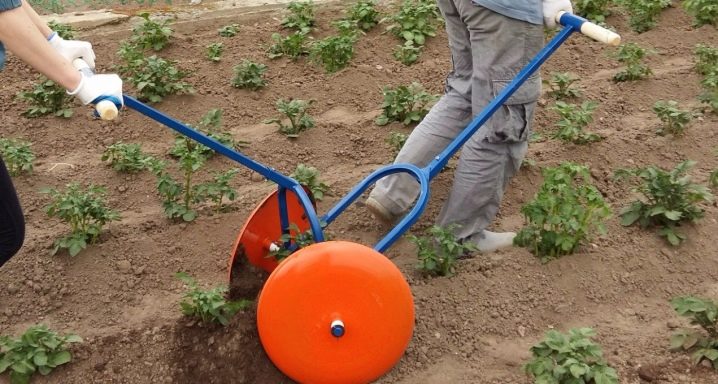
Specifications
Any gardener who has potatoes on his plot will most likely need a hiller. This tool is characterized by its versatility, it helps to cope with complex work more efficiently. The most common option is a manual hiller. The characteristic features of the product allow you to cut the ridges of the earth along the ridges, carry out pre-emergence and post-emergence processing. The dimensions of the standard tool are suitable for simultaneous harrowing and hilling of row spacings in a potato field. Depending on the characteristics of the tool, it is possible to process several rows with landings at once.
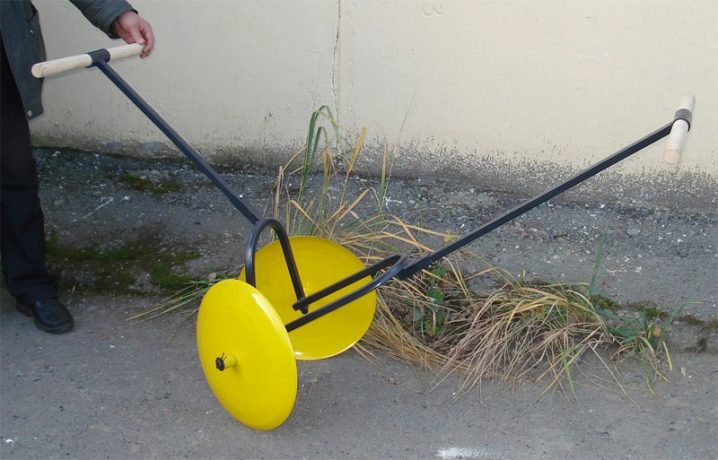
In addition to loosening the soil between the rows, the hiller simultaneously removes weeds. A quality tool purchased from the manufacturer has a special device that promotes self-cleaning from adhering dirt. Hillers successfully cope with the task on any type of soil.
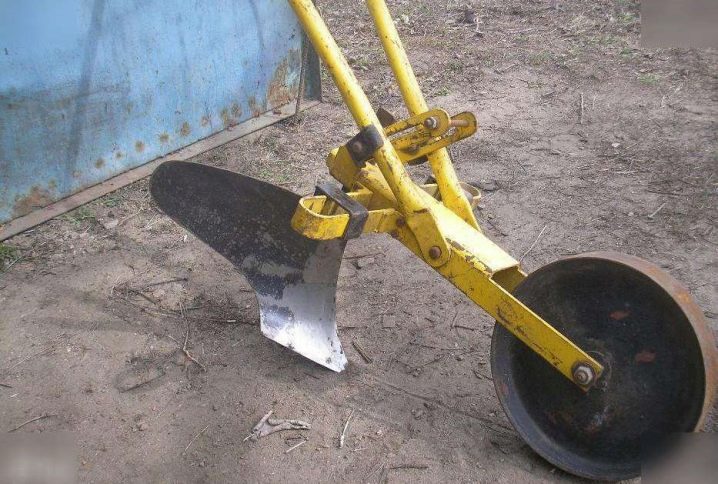
The main condition for successful soil loosening is the absence of stones and moisture content of no more than 20%. Modern hillers make it possible to apply mineral fertilizers simultaneously with soil cultivation. The features of the hillers allow one person to handle the tool.
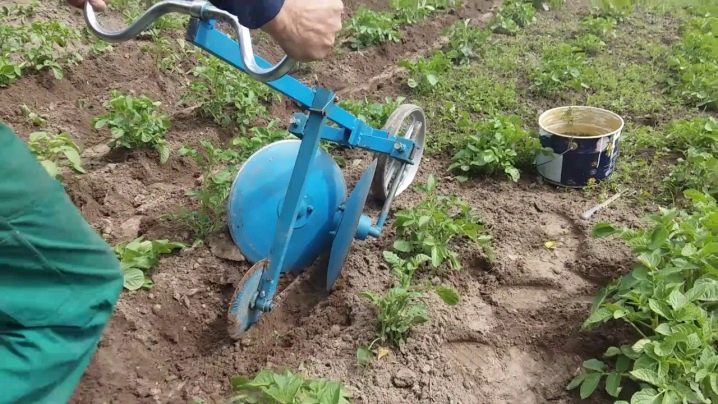
Principle of operation
Gardeners know that potatoes should be hilled several times per season. If the soil on the site is well-cultivated, loose, this contributes to a better oxygen exchange process. The air entering the soil has a positive effect on the development and growth of plants. Timely loosening increases the yield by 30-60%. Thanks to the design of the working body of the hiller, furrows with the required depth are obtained. The loosened soil falls off on both sides of the resulting ditch. Tubers are laid in it, and in the future, the grooves are covered with earth. In the process of growing, the potatoes must be sprinkled with a thick layer on top. This promotes the formation of a large number of tubers. This filling is provided again by loosening with the formation of a groove along the planted seedlings. This is achieved by the fact that the working parts of the hiller, when moving in the aisles, cut off the top layer of the earth.
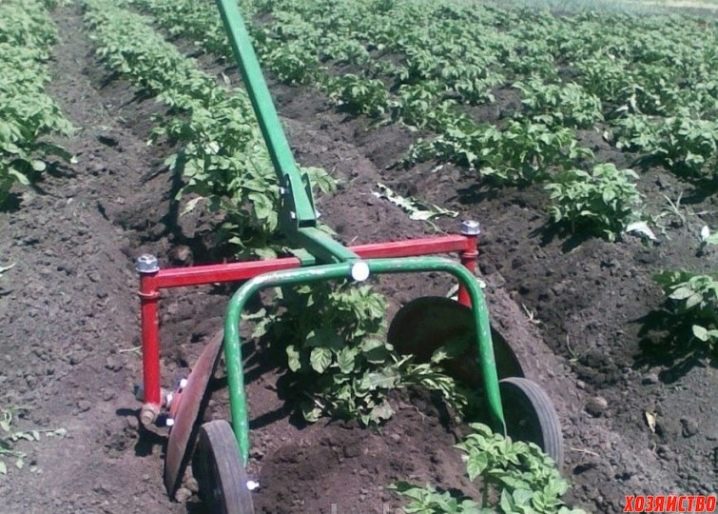
Thanks to the device in the form of wings, the blades fall onto the crop row and lightly sprinkle it. Weed vegetation is removed along with the cut land.
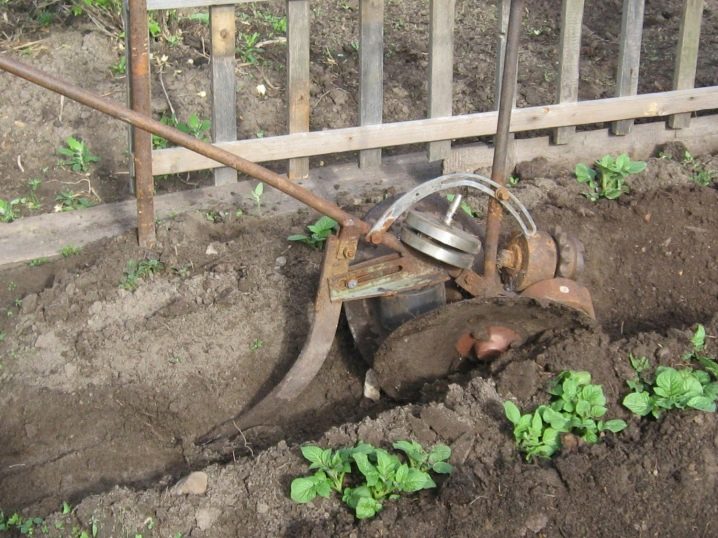
In addition to potatoes, other crops can be processed with a hiller.that are planted in rows and require hilling, for example, tomatoes, eggplants, peppers. Tool designs differ in working width, manual or mechanized operation. The first option is quite primitive, requiring two operators, one of whom grabs the front handle, and the other presses on the rear rod. As a result of efforts, the device goes deeper into the ground, cuts the soil, and when moving inside the seam leaves a noticeable trail of earth. The automated version clings to a tractor or walk-behind tractor and is controlled by one operator.
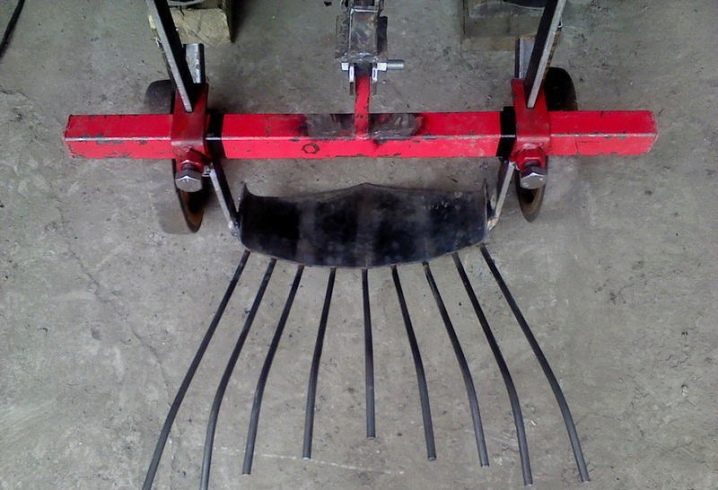
Views
Manual and automated hillers can be subdivided into the following types:
- disk Is a simple tool suitable for one person;

- garden Is a versatile plow requiring two operators.
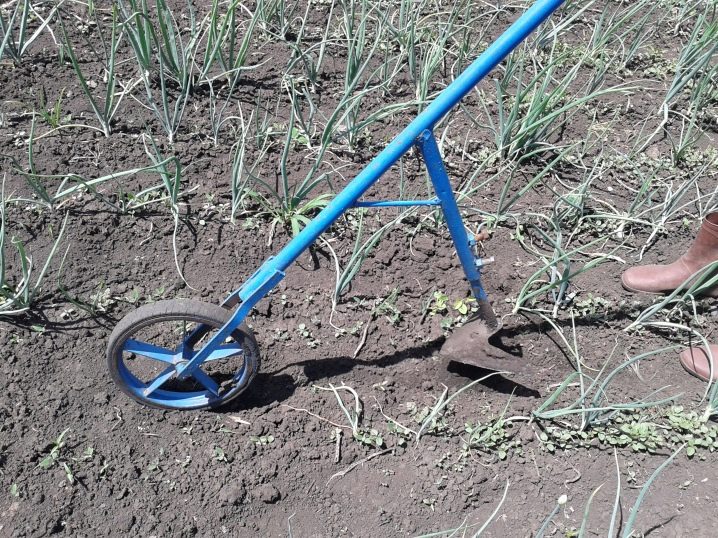
It is clear that the disc options are easier to use, they are often automated by linking them with motor vehicles. The ridges of the earth after the disc hillers are higher. There is also a negative point in these devices - the price. In comparison with the plow hiller, it is four times higher. Externally, the tool looks like a frame with wheels on which the disks are suspended. The distance between them can be changed in accordance with the row spacing. The discs are set at a certain inclination, which is not recommended to be adjusted in relation to the vertical. Without a constant equal distance between the circles, the tool will pull sideways.

Automation of the hiller is possible if the farm has a walk-behind tractor or cultivator. A bracket, a stopper, two bolts and washers are enough to mount the tool. The discs will grip the ground as they move, creating a roller. To increase traction, the walk-behind tractor must work in the first low gear. By rotating the discs, the earth is crushed and loosened, filling the plants in the rows.
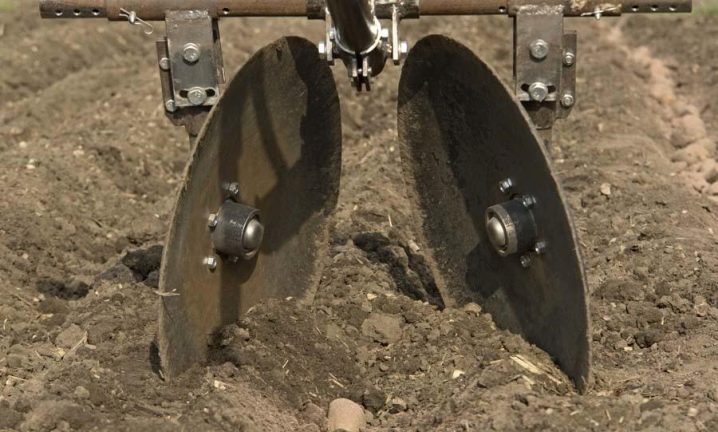
The simplest type of hand plow has a predetermined working width, wings (plows), shifted relative to each other, which are stationary. This is convenient if the row spacing has already been determined, and the tool fits them. Another advantage of the fixed width hillers is the possibility of using light cultivators weighing up to 30 kg. The advantage lies in compactness, and the negative side is hidden in the limited work in wet areas. This is where the tool will stick in the soil.
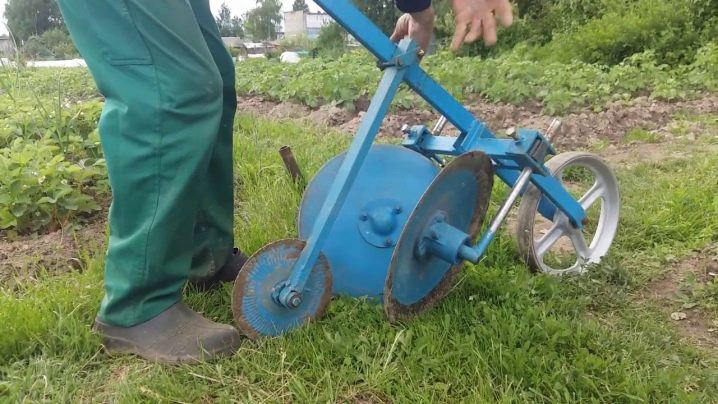
A variable width furrower is the most common option. The adjusting mechanism is simple, but it allows you to move or extend the wings, adjusting them to the desired width for the row spacing. The tool can also be automated, but only with heavy walk-behind tractors. The wings of such a hiller move the earth in both directions at once. After the tool passes, the piece crumbles back into the line that it cuts. For a more efficient harrowing process, a more powerful walk-behind tractor is required, otherwise it will seem harder to pull the hiller than to work with a hoe or hoe.
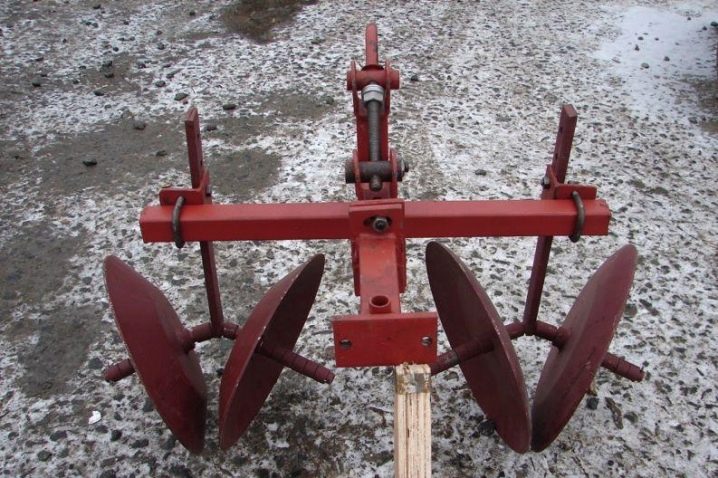
More convenient in this regard is the Dutch-type hiller. This view differs from the previous one by the possibility of wing movement not only to the sides, but also upward. As a result, the instrument itself adapts to the soil condition. The hiller is more convenient in the cultivation of furrows for planting potatoes. This option is easier and cheaper for self-production.
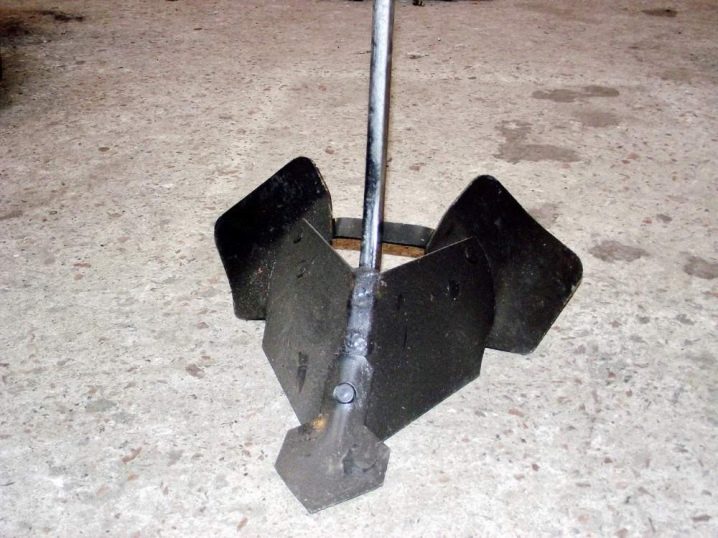
Variety of models
On the market of products for agriculture, you can find a manual hiller "Druzhba". It is equipped with adjustable fenders that allow you to change the working width and the addition of a front iron support wheel. The equipment is operated by two operators. Product dimensions are 55 cm wide and 48 cm high. Unit weight - 17 kg. It is produced in the city of Cheboksary, and its cost varies from 3000 to 4000 rubles.
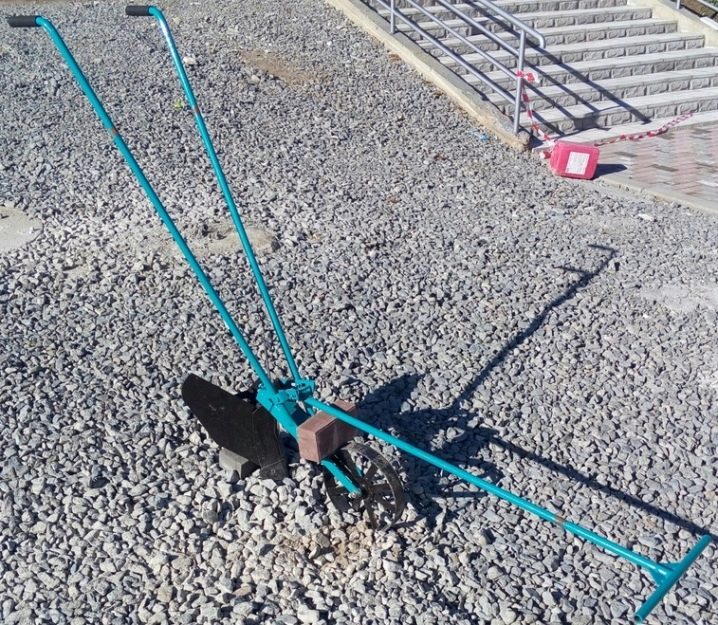
Another version of the hiller is "Tiani-Push", which is popularly called a manual plow. It is unregulated. The design of the tool allows them to cut furrows, weed weeds, and huddle planted potatoes. The product is 45 cm wide and 90 cm high (including handle). The unit has a weight of 7 kg. It is lightened by rubberized handles. The price of the instrument is from 1,500 rubles. It was produced in Kiev.
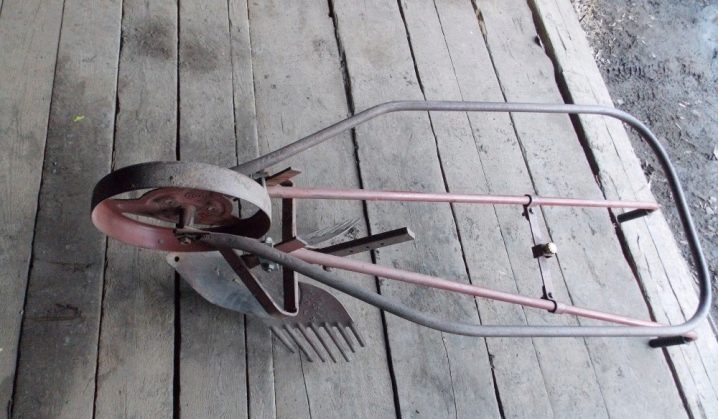
A popular hand-held tool is the "Hairdryer". The design provides for the ability to work with both two and one operator. The hiller is adjustable both in the height of the handles and in the width of the cultivated ridge. As an additional tool to the hiller, a flat cutter is offered, which is connected by a handle with ordinary bolts. Product dimensions - 16x40x40 cm, and weight - 10 kg.
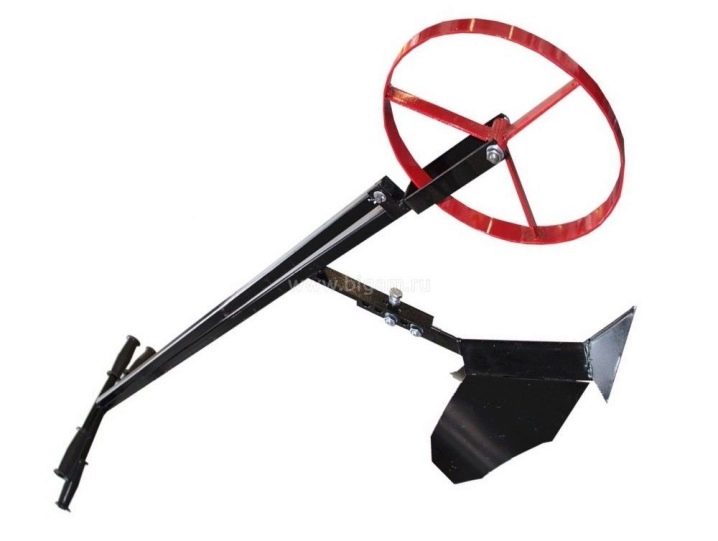
Important! The variety of models such as "Friendship", "Tiani-Tolkai" is expanding due to a new generation of rotary active hiller, which is also called propeller. It is believed that the tool not only loosens the soil, but also allows you to harrow the plants with the loosened soil, which is very useful for their roots.
Modern manufacturers offer flat cutters. This tool is a bent plate with sharpened edges. With the help of the equipment, you can remove weeds and loosen the soil. To weed several row spacings at the same time, several plane cutters are combined on a special hitch. On the market, it is called the wide row weeder.
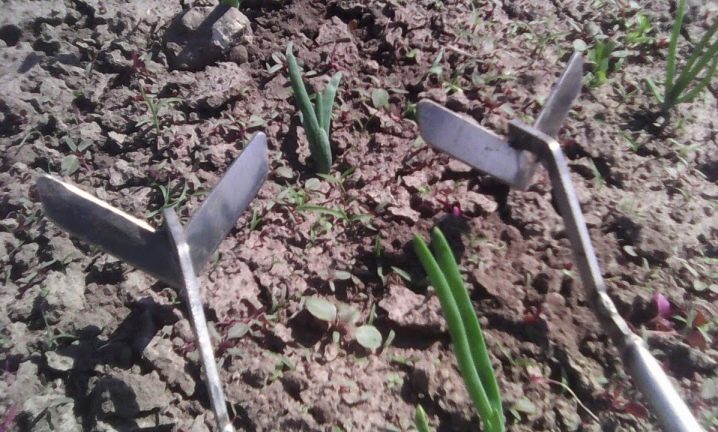
The Tornado cultivator became famous among hand tools for loosening. It features a simple design with curved teeth connected to the handle. In relation to the base, they are turned counterclockwise. To work with the tool, it is enough to rotate it around the axis in a vertical position.
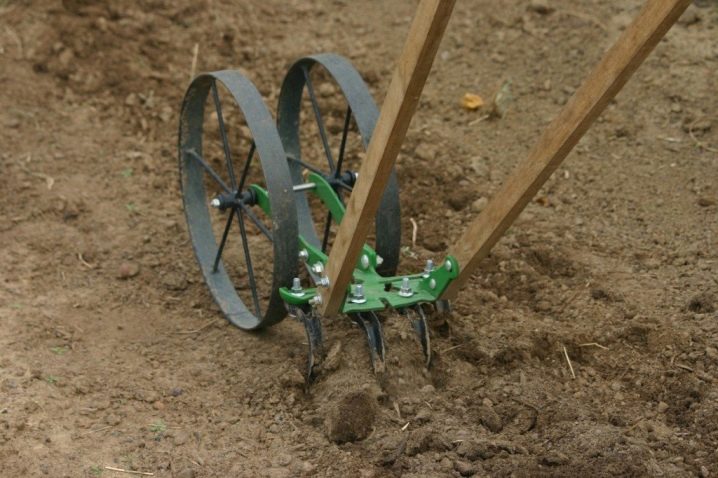
Self-production
For self-production, the tool is simple. To make a hiller yourself, you need drawings and skills in working with metal. It is advisable to have the following tools:
- welding machine;
- gas-burner;
- angle grinder;
- drill;
- sharpener.
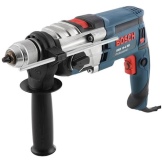

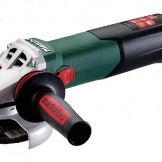
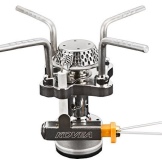
An alternative would be homemade tillers that can be used with any walk-behind tractors and cultivators. For the manufacture of a part, a steel sheet is needed from which the base is cooked. The pipe will act as a bracket. The entire load will be borne by an element called a rack. For the wings, you need two sheets of the same size. If the hiller is adjustable, then hinges are attached to the base of the wings. For better rigidity, the products are bent at a slight angle. A two-row hiller differs from a simple one in the increased dimensions of the bracket. It must be sufficient to support two pairs of plows (wings).
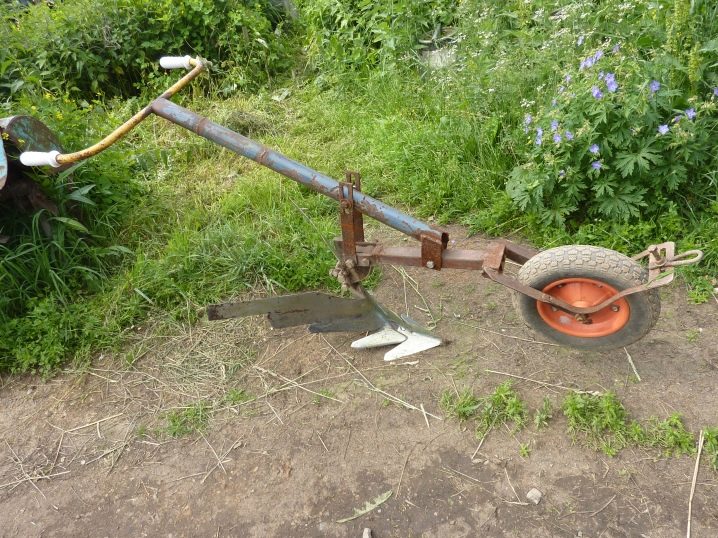
Choice
A correctly made choice will help to maximize the mechanization of agricultural labor. For less effort in planting potatoes, furrowing is easier with the adjustable fenders. To huddle plants, it is better to choose the disc option. To quickly cope with the work, and not pull the tool along each row, you need to consider a two-row classification of hillers. With sufficient power of the walk-behind tractor, you can choose four-row equipment.
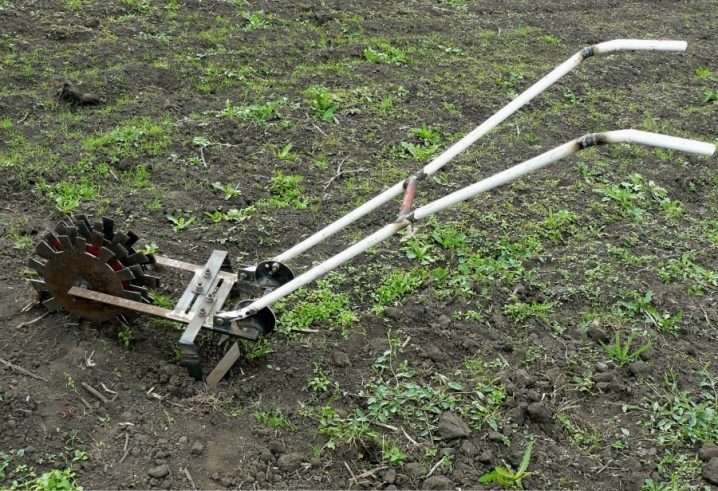
To choose the right hiller, you also need to compare such factors as:
- soil type;
- type of walk-behind tractor;
- site dimensions;
- possible amount to spend.
For example, if it is planned to cultivate heavy soils, the quality of the steel will be an important parameter. However, a low power cultivator is unlikely to pull a heavy tool. If there is not enough money to buy a high-quality tool, and you need to process heavy soils, you can turn to the craftsmen for help or make the necessary parts yourself. For homemade products, the characteristics of some popular models are useful.
For example, a two-row hiller has the following parameters:
- dimensions - 450x130x45 mm;
- capture width - 300 mm;
- weight - 4.4 kg.
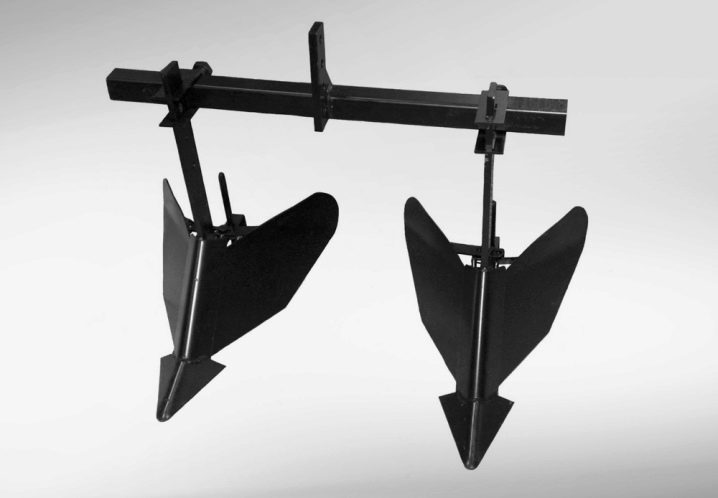
The disc hiller with adjustable width, height and depth has the following maximum parameters:
- width - 70 cm;
- height - 62 cm;
- disc diameter - 37 cm;
- processing depth - 30 cm.
Operating tips
It is easy to use a hiller on a handle. There are a few steps to follow.
- The preparatory stage of the cultivation of the site is the loosening of the soil. In loose soil, the furrows will turn out deeper, and the work of creating them will be easier. Place marks on the ground for greater accuracy. They should be equal to the width of the bracket on which the hiller is installed. Use a tiller with attachments to make furrows and place potatoes in them.
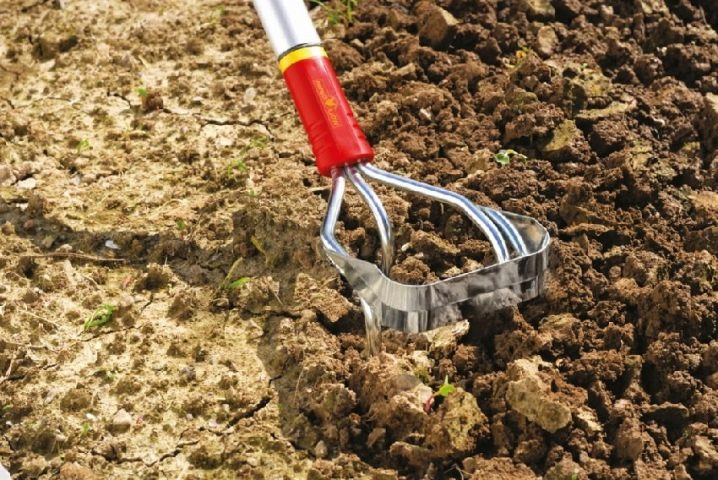
- Then it is recommended to expand the hiller's wings to the maximum possible width.The tool is installed in the aisles and led along the furrow, filling the seed potatoes with soil.

- It is time to carry out the first harrowing simultaneously with the emergence of seedlings. The tiller is installed so that the cultivated furrow is between the discs. The tool must be guided straight, the discs will form a ridge, while crushing the clods of earth at the same time.

You can learn more about the manual hiller from the video below.


































































The comment was sent successfully.